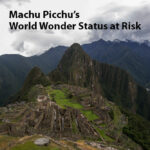Cajamarca Mining Crisis: Yanacocha and Cerro Corona Near Closure
Cajamarca, one of Peru’s most resource-rich regions, is facing a turning point in its mining industry. Two of its largest gold mines, Yanacocha and Cerro Corona, are entering closure phases, while major copper megaprojects remain stalled. This scenario threatens to deepen poverty in what is already the poorest region of Peru, despite holding the country’s largest mining investment portfolio.
According to a recent report from El Comercio, Yanacocha—operated by Newmont—is selling off its mining trucks and equipment as it transitions into its closure stage. Operations will focus only on processing accumulated ore for the next three to four years before a complete shutdown. Similarly, Cerro Corona, managed by Gold Fields, is winding down production due to environmental restrictions, with closure expected by 2030.
The End of a Gold Era
Until 2005, Cajamarca was Peru’s top gold producer, with an annual output of over 100 tons. Today, production has fallen to just 20 tons—a staggering 85% decline. The closures of Yanacocha and Cerro Corona, which account for nearly 70% of the region’s gold output, will further reduce mining activity, jobs, and fiscal revenues.
This decline is partly traced back to the cancellation of the Conga project in 2011, a $4.8 billion investment halted after massive social opposition under former President Ollanta Humala’s administration. The slogan “Agua sí, oro no” (“Water yes, gold no”) became a rallying cry against large-scale mining projects, setting the stage for a decade-long paralysis.
Untapped Copper Potential
Despite setbacks in gold, Cajamarca holds enormous copper potential. Projects such as La Granja (controlled by Rio Tinto), Michiquillay (Southern Copper), Galeno (China Minmetals), and Yanacocha Sulfuros could transform the region into Peru’s top copper producer, with nearly 900,000 tons of annual production. However, five of these eight projects remain stalled due to social, environmental, and corporate challenges.
If reactivated, these projects could increase Cajamarca’s mining royalties tenfold, from S/228 million to more than S/2.2 billion annually, according to Peru’s Ministry of Energy and Mines.
Social and Economic Costs
The mining deadlock has left Cajamarca trapped in poverty and underdevelopment. Informal and illegal mining is rising, particularly in areas like Conga, posing new risks to environmental stability and formal investment. Meanwhile, companies warn that without state-backed synergies—such as shared infrastructure projects—the region’s mining future may collapse entirely.
The Road Ahead
The Peruvian government has recently announced regulatory reforms and a development plan to unlock investments in Cajamarca. Proposals include joint infrastructure, such as a pipeline (known in Peru as a ‘mineroducto’) to transport copper to coastal ports, and tax incentives to attract exploration investment. However, without decisive action, experts warn of a “death foretold” for mining in Cajamarca.
Cajamarca remains paradoxical: the poorest region in Peru, yet the richest beneath the ground. Whether it can overcome political, social, and environmental obstacles to unleash its copper and gold potential will define the future of Peru’s mining sector.

